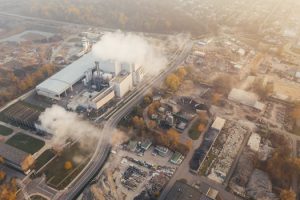Regenerative Textile Technologies Healing Planetary Ecosystems
In recent years, the fashion industry has been increasingly criticized for its negative impacts on the environment. From pollution and waste to exploitative labor practices, the current global textile industry is far from sustainable. However, a new movement has emerged – one that aims to heal not only the fashion industry but also the planet itself. This is known as Regenerative Textile Technologies, and it is revolutionizing the way fabrics are made, used, and disposed of. In this article, we will explore how Regenerative Textile Technologies are healing planetary ecosystems and paving the way for a more sustainable future.
The Current State of the Fashion Industry
The global textile industry is the second-largest polluter in the world, emitting more greenhouse gases than all international flights and maritime shipping combined. It also contributes to approximately 20% of global wastewater and emits microplastics into the ocean, where they harm marine life and enter our food chain. Furthermore, the fast fashion model, where new collections are released every few weeks, contributes to a culture of overconsumption, where clothes are quickly discarded, leading to massive amounts of textile waste.
The fashion industry’s negative impact is not limited to the environment; it also has severe social implications. Sweatshops and exploitative labor practices are prevalent throughout the supply chain, with workers in developing countries being paid below minimum wage and working in unsafe conditions.
What are Regenerative Textile Technologies?
Regenerative Textile Technologies are a series of methods, techniques, and processes that aim to not only reduce the negative impact of the textile industry but also repair and heal the damage caused. These methods focus on creating a closed-loop system where products and materials are designed to be continuously cycled and reused, eliminating waste and reducing the need for new resources.
One of the key principles of Regenerative Textile Technologies is using natural and renewable materials to create fabrics. This means shifting away from the traditional use of synthetic fibers, such as polyester and nylon, which are derived from fossil fuels and take hundreds of years to decompose. Instead, natural fibers like organic cotton, linen, and hemp are used, which are biodegradable and have a lower environmental impact.
Regenerative Agriculture
Another essential aspect of Regenerative Textile Technologies is the use of regenerative agriculture. This involves farming practices that improve soil health, restore biodiversity, and sequester carbon from the atmosphere. Regenerative agriculture enables the cultivation of natural fibers in a way that not only minimizes environmental impact but also actively contributes to healing the planet. Additionally, this type of farming also supports local communities, creating more sustainable and ethical supply chains.
The Benefits of Regenerative Textile Technologies
By incorporating Regenerative Textile Technologies into the fashion industry, we can create a more sustainable and ethical system that benefits the planet, people, and animals. Some of the key benefits include:
Reduced Carbon Footprint
Regenerative Textile Technologies focus on using natural and renewable materials, which have a lower carbon footprint than their synthetic counterparts. Additionally, by implementing regenerative agriculture practices, carbon can be sequestered from the atmosphere, helping to combat the negative effects of climate change.
Less Waste
By establishing a closed-loop system, Regenerative Textile Technologies can significantly reduce waste in the fashion industry. Products and materials are designed to be continuously cycled, preventing them from ending up in landfills or polluting the environment. This practice also reduces the need for new resources, further minimizing the industry’s impact.
Sustainable Economic Growth
Regenerative Textile Technologies promote ethical and sustainable practices throughout the supply chain, ensuring the fair treatment and payment of workers. This supports local economies and contributes to more sustainable economic growth rather than exploiting workers in developing countries.
Conclusion
In conclusion, Regenerative Textile Technologies are paving the way for a more sustainable and ethical future for the fashion industry. By focusing on natural and renewable materials, utilizing regenerative agriculture, and creating closed-loop systems, we can significantly reduce the negative impact of the textile industry on the environment. This, in turn, will contribute to healing planetary ecosystems and creating a more sustainable planet for generations to come.










